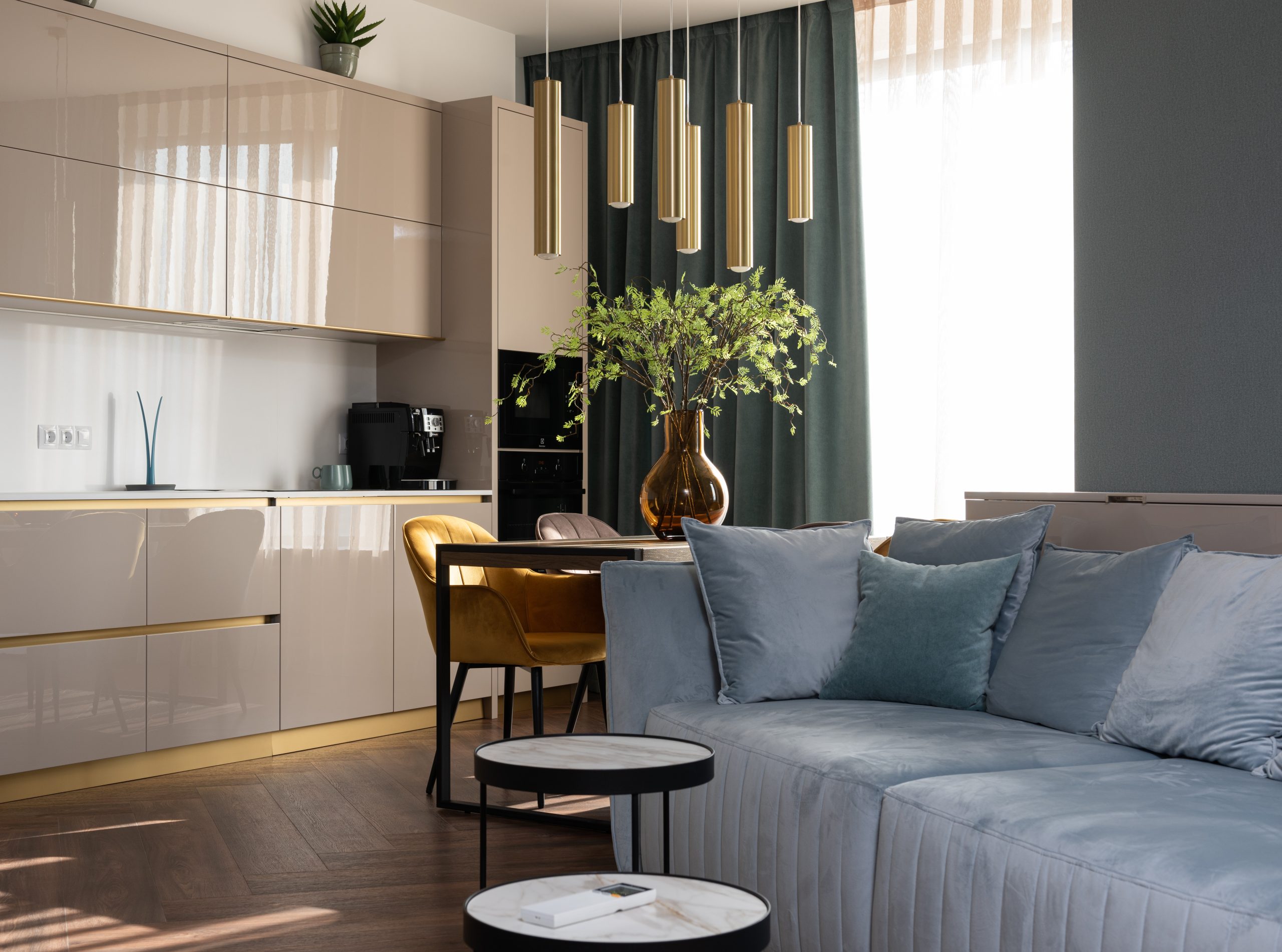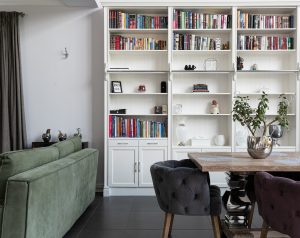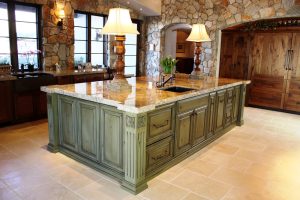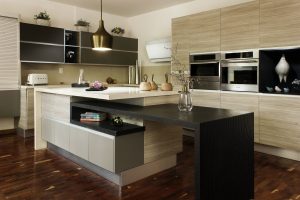Creating a Biophilic kitchen is more than just incorporating house plants into your final design. Blur the lines of outdoor and indoor living. Introduce sustainable materials and architectural elements, exhilarating your five senses.
When choosing your cabinetry and the type of wood, take into account hardwoods that are native to your home’s location. The design should be symmetrical and if possible, be built around the windows in your kitchen. By obtaining symmetry in your cabinet design, as well as backsplash placement, this is a sure way to draw your eye outdoors and create an appealing aesthetic. If you decide against wood tones, neutral toned cabinets are another great option. Include muted pops of color in textured backslash or an accent wall to keep the space alive and inviting.
With so many types of materials available, now is your chance to mix, match, and layer your kitchen. Include stone, steel, and wood. Create an intriguing outcome while allowing the space to feel natural. Keep in mind the level of sound this room should allow for. Install padded wood or bamboo floors. Make use of similar materials like untreated planks of wood for the ceiling. In doing so, excess noise caused by appliances or a busy kitchen will be absorbed. Selecting rugs or curtains specific to your style will achieve a similar effect.
Going back to the five senses. Soft lines, lighting, texture, and air quality all play their part when designing a Biophilic space. Soft lines should include rounded edges and balanced lighting (similar to sunlight if not natural light). This will reduce shadows and create an even flow throughout the kitchen. Surfaces that will be touched often should be of subtle texture, like smooth steel or raw buffed edges of natural stone. Good air quality in the home should be abundant, use indoor plants to discreetly purify the air.
Allow your kitchen to be functional, welcoming, and a calming environment for any occasion with the use of Biophilic design.
For examples and inspiration, visit:






